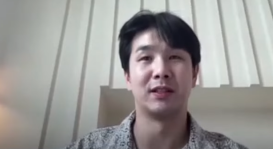
Forget about the iPhone from Apple -- we could soon have a new wave of ‘Eye Phones’ that will flood the market, at least for those who have decided on the merits of contact lenses compared to that of a pair of spectacles. It seems that smartphone-connected contact lenses could pave a new future of wearable technology, where it will work with apps on your smartphone in an appropriate manner.
Thanks to the engineers at the University of Washington, they have come up with an innovative method of communicating through smartphone-connected contact lenses. This, in effect, will enable medical aids such as contact lenses as well as brain implants to be able to send signals to smartphones.
Such new technology has been christened "interscatter communication." Interscatter communication works this way: it converts Bluetooth signals into Wi-Fi signals, where a paper in which the engineers have written would have been presented today at the Association for Computing Machinery's Special Interest Group on Data Communication conference that is happening in Brazil.
Co-author Vamsi Talla, a research associate in the Department of Computer Science and Engineering at the University of Washington, shared, "Instead of generating Wi-Fi signals on your own, our technology creates Wi-Fi by using Bluetooth transmissions from nearby mobile devices such as smartwatches."
Interscatter communication will be based on a method of communication known as backscatter, where it will allow devices to exchange information simply by reflecting back existing signals. "Interscatter" works in pretty much the same manner, albeit that it paves the door open for inter-technology communication. To put it simply, Bluetooth signals can talk to Wi-Fi signals, and vice versa.
In other words, interscatter communication can enable a variety of devices, contact lenses included, to be able to send data to other devices. Such a method of communication had been deemed to be impossible until now, as sending data using Wi-Fi saps a whole lot of power for something as small, thin and light as contact lenses.
A demonstration of interscatter communication would have required the engineers to come up with a contact lens that will boast of a tiny antenna within. The Bluetooth signal in the demonstration hailed from a smartwatch, where the antenna on the contact lens could then manipulate that Bluetooth signal, before it encodes the data from the contact lens prior to conversion to a Wi-Fi signal. This converted Wi-Fi signal is then readable on a different device.
It might be deemed to be too much of a gimmick by some to call this “smart” contact lenses, but in the future, such contact lenses might prove worthy in delivering vital medical information to patients. For instance, how about monitoring one’s blood sugar levels via one’s tears? This pair of connected contact lens can track blood sugar levels, before it sends notifications to a smartphone whenever it detects dropping blood sugar levels.
Not only that, the researchers claimed that interscatter communication can come in handy to transmit data from brain implants, and this could be used in the future to assist paralyzed patients in regaining their movement. It would be interesting to see how such technology will improve the lives of many down the road with further developments and research.







